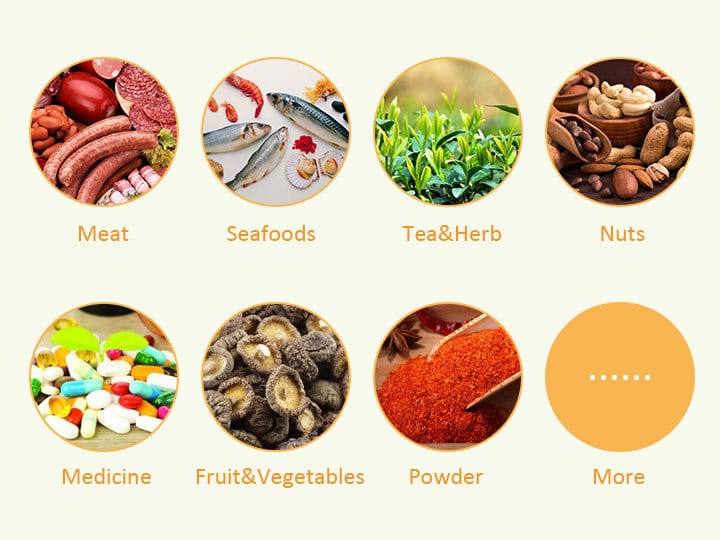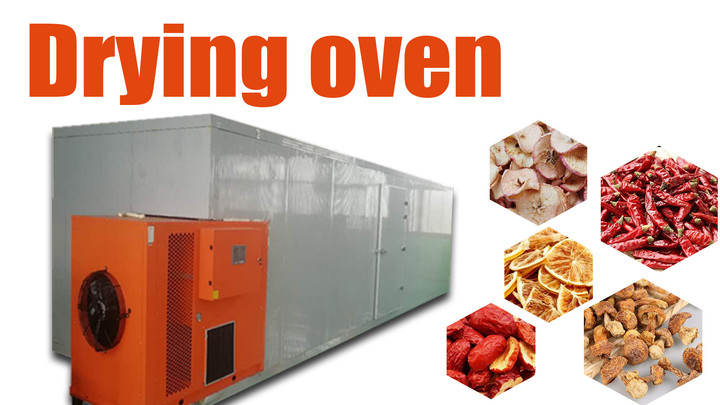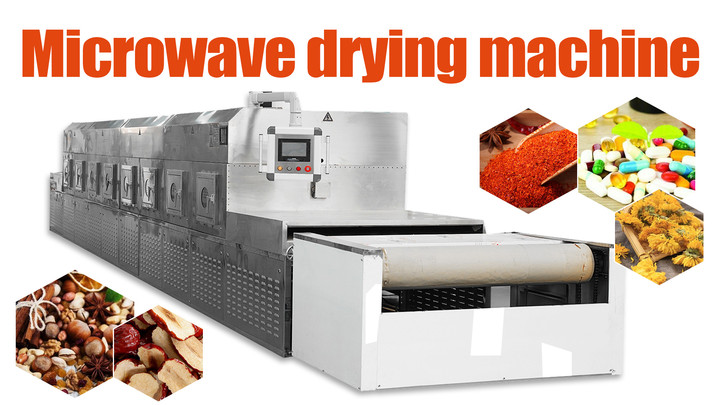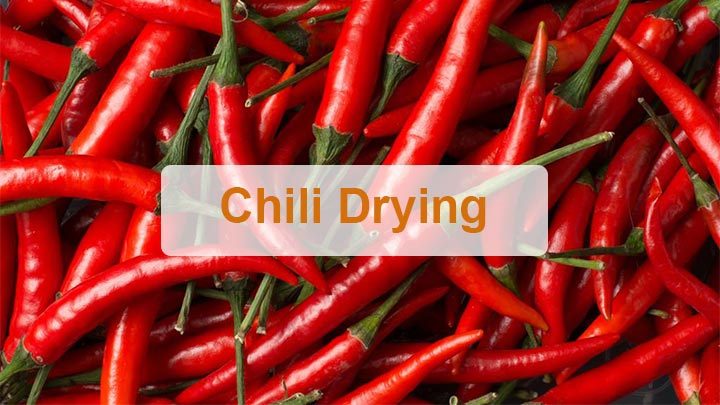
Shuliy chili drying machine can efficiently and quickly dry chili with high quality. During the drying process, the chili will be completely dried without changing color or deterioration.
The traditional method of chili drying is mostly sun-dried or air-dried. Not only will it be affected by the weather, but it is also easy to cause partial over-drying. In this way, the dried product cannot guarantee the shape of the product, and it is also prone to insects in later storage. Our company has corresponding drying methods for chili and chili powder.
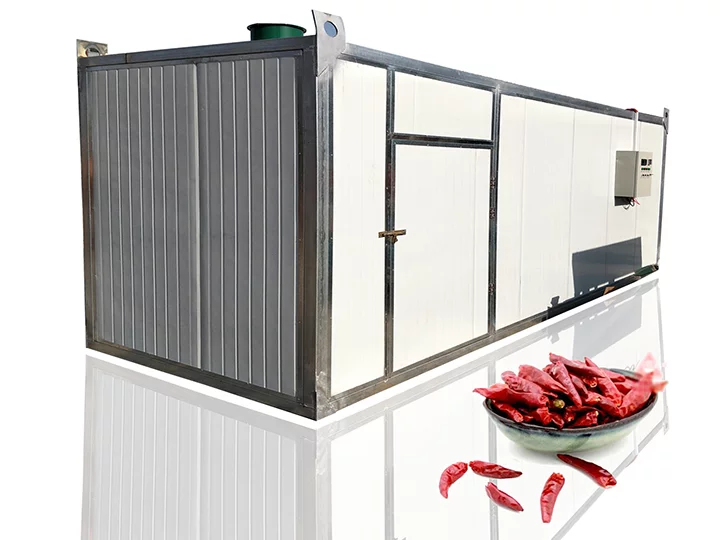
Chili is a kind of food with a unique flavor. It can be used directly or made into powder and used as a seasoning. Dried chili peppers have a wide range of effects, not only can promote digestion, and increase appetite, but also accelerate blood circulation in the body.
The necessity of pepper drying
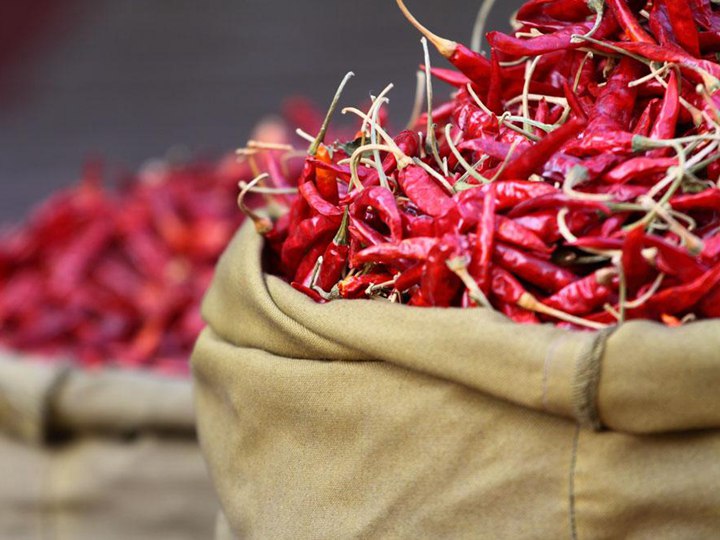
Drying is a very important step in the chili drying process, it can bring many benefits to the pepper. If the peppers are not dried after being picked, they will spoil very quickly. After drying, the shelf life can be extended. By reducing the moisture content of the pepper, the flavor of the tea can be increased. The pepper will not destroy its nutritional components during the drying process. And the color, fragrance, and shape of the pepper can be better preserved, which can make the pepper have higher commercial value.
Advantages of our different chili dryer
At present, there are three common modern drying methods for chili drying, namely box-type batch drying, belt-type continuous drying, and microwave drying.
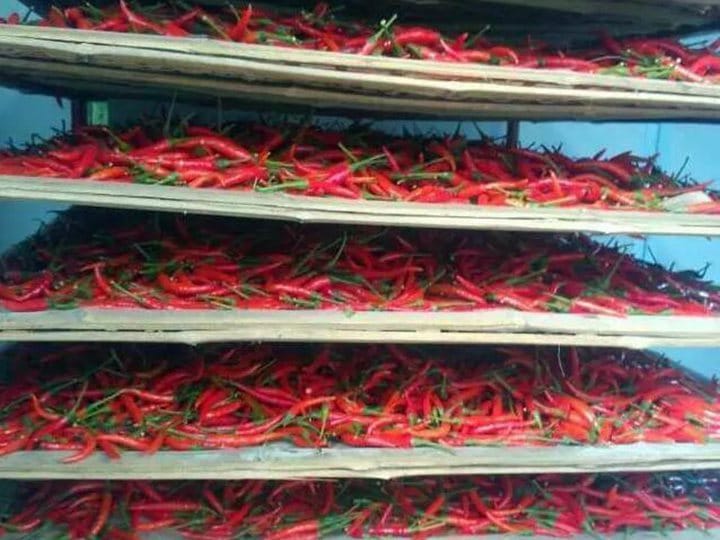
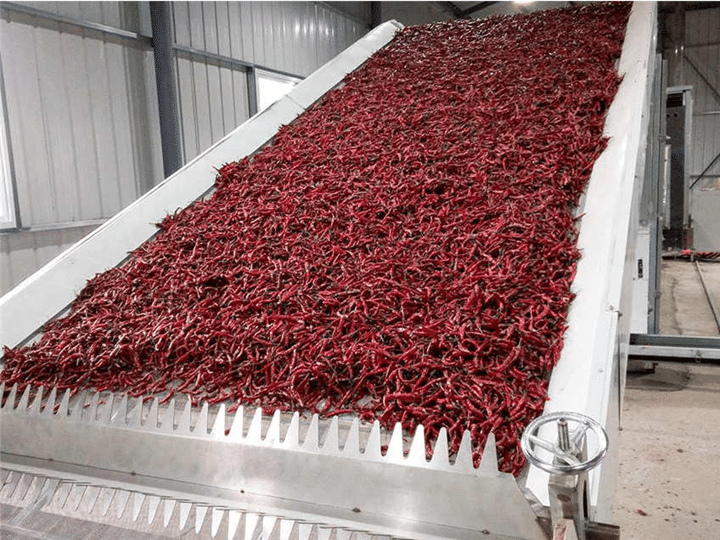
For dried chili, both batch type box drying and continuous belt drying can dry the material well. Both of the methods use hot air circulation to dry, so it is not suitable for chili powder. For powder drying, we generally use the microwave drying method. The material will remains static during the drying process. Microwave drying does not need to be equipped with a heat source, because the microwave energy directly acts on the medium molecules to convert into heat energy. The penetration of the microwave enables the material to be heated inside and outside at the same time without the process of heat conduction. It has the advantages of fast drying speed, uniform drying, easy accessibility and non-pollution.
The process of chili drying
The peppers are evenly spread in the grid tray with a thickness of about 3 cm. Each material truck has 12-14 layers. After being filled, it is pushed into the drying room. The drying temperature of pepper is adjustable from 55-75℃.
- Preparation stage: After the preparation work before drying the chili is completed, put the chili on the special drying plate and put it in the chili drying room, turn on the control panel of the host to dry, the whole drying process can be Fully automatic computer control, no need for manual duty.
- Initial stage: The drying process of dried chili is not carried out at a constant speed. The early stage shows a rapid drying stage, so the temperature needs to be set slightly lower. Generally, in the initial stage, the temperature is set to 55°C, the drying does not drain moisture, and the drying is carried out for 2 hours.
- Drying stage: In this stage, our main purpose is to remove moisture. The temperature is set to 60°C, the humidity is set to 15%, and dry for 8 hours.
- Moisture regain stage:At this time, most of the water in the chili has been removed, but further drying is needed at this time. Set the temperature to 58°C, humidity to 10%, and finally dry for 2 hours to reach the drying standard
- Storage stage: After the drying finished, don’t pack it immediately. It is best to wait until the chili has completely cooled down and consistent with the room temperature before starting to pack. Packed dried chili should be placed in a dry and cool place.

For different kinds of chili and product requirements, the temperature, humidity, drying time will be relatively different during the drying process.
Applications of the chili drying machine
Our machine can not only be used to dry meat products, but also can be used to dry seafood, fruits, and vegetables, nuts, condiments, flowers, medicine, the chemical industry, etc.
